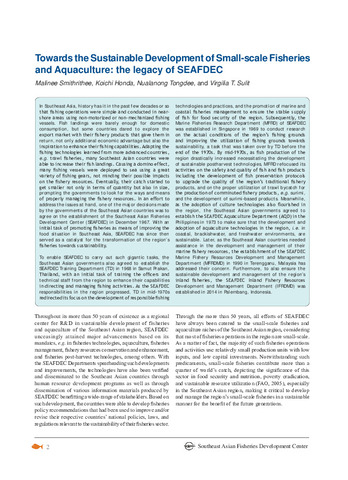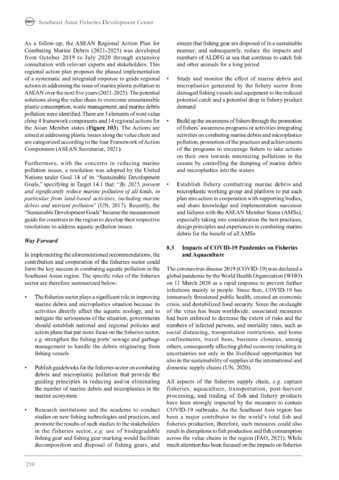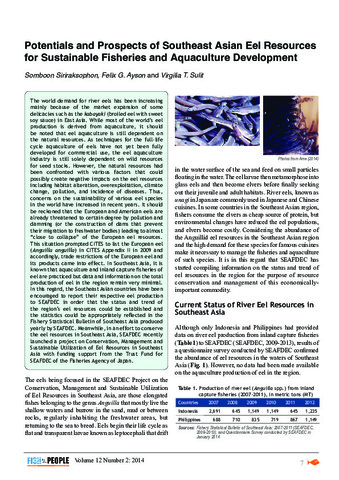| dc.description.abstract | In Southeast Asia, history has it in the past few decades or so that fishing operations were simple and conducted in nearshore areas using non-motorized or non-mechanized fishing vessels. Fish landings were barely enough for domestic consumption, but some countries dared to explore the export market with their fishery products that gave them in return, not only additional economic advantage but also the inspiration to enhance their fishing capabilities. Adapting the fishing technologies learned from more advanced countries, e.g. trawl fisheries, many Southeast Asian countries were able to increase their fish landings. Causing a domino effect, many fishing vessels were deployed to sea using a great variety of fishing gears, not minding their possible impacts on the fishery resources. Eventually, their catch started to get smaller not only in terms of quantity but also in size, prompting the governments to look for the ways and means of properly managing the fishery resources. In an effort to address the issues at hand, one of the major decisions made by the governments of the Southeast Asian countries was to agree on the establishment of the Southeast Asian Fisheries Development Center (SEAFDEC) in December 1967. With an initial task of promoting fisheries as means of improving the food situation in Southeast Asia, SEAFDEC has since then served as a catalyst for the transformation of the region’s fisheries towards sustainability.
To enable SEAFDEC to carry out such gigantic tasks, the Southeast Asian governments also agreed to establish the SEAFDEC Training Department (TD) in 1968 in Samut Prakan, Thailand, with an initial task of training the officers and technical staff from the region to enhance their capabilities in directing and managing fishing activities. As the SEAFDEC responsibilities in the region progressed, TD in mid-1970s redirected its focus on the development of responsible fishing technologies and practices, and the promotion of marine and coastal fisheries management to ensure the stable supply of fish for food security of the region. Subsequently, the Marine Fisheries Research Department (MFRD) of SEAFDEC was established in Singapore in 1969 to conduct research on the actual conditions of the region’s fishing grounds and improving the utilization of fishing grounds towards sustainability, a task that was taken over by TD before the end of the 1970s. By mid-1970s, as fish production of the region drastically increased necessitating the development of sustainable postharvest technologies, MFRD refocused its activities on the safety and quality of fish and fish products including the development of fish preservation protocols to upgrade the quality of the region’s traditional fishery products, and on the proper utilization of trawl bycatch for the production of comminuted fishery products, e.g. surimi, and the development of surimi-based products. Meanwhile, as the adoption of culture technologies also flourished in the region, the Southeast Asian governments agreed to establish the SEAFDEC Aquaculture Department (AQD) in the Philippines in 1973 to make sure that the development and adoption of aquaculture technologies in the region, i.e. in coastal, brackishwater, and freshwater environments, are sustainable. Later, as the Southeast Asian countries needed assistance in the development and management of their marine fishery resources, the establishment of the SEAFDEC Marine Fishery Resources Development and Management Department (MFRDMD) in 1990 in Terengganu, Malaysia has addressed their concern. Furthermore, to also ensure the sustainable development and management of the region’s inland fisheries, the SEAFDEC Inland Fishery Resources Development and Management Department (IFRDMD) was established in 2014 in Palembang, Indonesia. | en |





